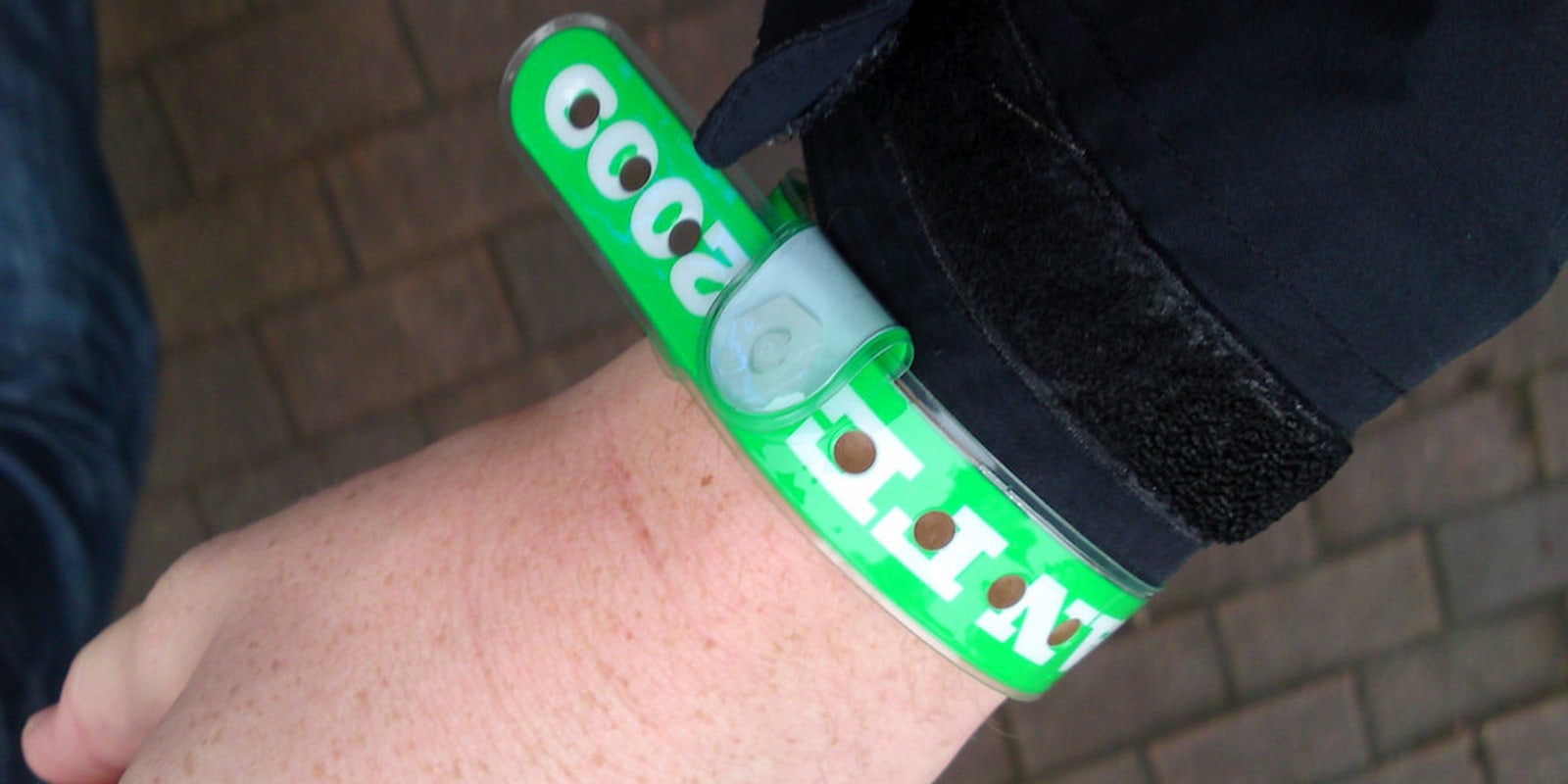We’ve heard of smart jewelry. We’ve heard of fitness trackers. We’ve even heard about sexual fitness trackers. But the latest trend in wearable technology won’t track your caloric intake, your fitness regimen, or even how long you last in bed. Instead we’re moving on to wearables that track how happy or sad you are.
According to Fast Co Exist, the company Studio XO is working on a bracelet (not pictured above) that tracks your changes in mood, or as founders Nancy Tilbury and Benjamin Males put it, “sentiment maps of your individual life.” The silicone wristband works in much the same way as a mood ring does: by flashing various colors to show how the wearer is feeling. The bracelet also is equipped with wireless connectivity, so the data can be transmitted via server to others.
Although it’s easy to see how a mood-tracking bracelet could be beneficial for therapeutic reasons—imagine, say, that a psychiatrist could determine how a particularly taciturn patient suffering from depression was feeling, simply by seeing what color was flashing on their bracelet—it seems that for now, it’s primarily being developed as a novelty or marketing tool.
Studio XO, for instance, which collaborates with artists like Lady Gaga and Arcade Fire, wants to distribute the wristbands to audience members at concerts and then transmit their emotional data on screen, for the purposes of “breaking down the walls and barriers between artist, brand, and fan.” And Fast Co points out that the wristbands would be excellent tools for brand PR representatives, so brands can get more accurate data regarding their customers’ feelings about a specific product.
Other forays are more conceptual than anything else. The Mood Sweater, which reads a user’s excitement levels, displays different colors depending on the wearer’s feelings. There’s also the Intimacy 2.0 Project, a dress that turns translucent as the person underneath it becomes aroused. Despite the significant exploration going on in mood-tracking wearables, it can’t be denied that brands are very excited by this emerging segment and we will see it turning up at concerts, conferences, and for advertising purposes.
But if mood-tracking wearables were to become a market staple, they would likely prove most beneficial not to marketers, but to us, so we can better understand and process our own emotions. As trite as it might sound, it’s often difficult for some people to realize when they’re feeling even simple emotions like happiness or sadness, either because they’re under duress or because they’re emotionally stunned in some way. (Example: Everyone you dated in college.) For these people, it’s not inconceivable to see how mood-tracking wristbands might transcend the status of tech curio or novelty, and actually serve as a legitimate therapeutic tool.
H/T Fast Co Exist | Photo by Karl Baron/Flickr (CC BY 2.0)
